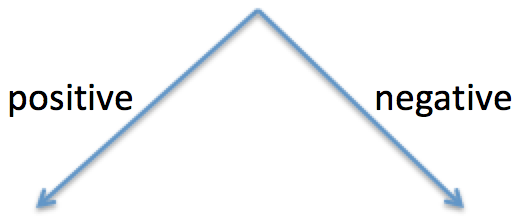Imagine you are the manager of a business investigating missing petty cash. Your investigation involves collecting reports from employees. It is unclear whether the cash is missing due to an error or because it was stolen, but you initially have a strong hunch that it was not stolen (you assume only a one in 3 chance of theft, i.e. a 33% chance).
During the course of your investigation, Robert (an employee) approaches you to provide a report that one of your other employees (Thomas) stole the cash. Dan, the supposed direct witness to this event, is on leave and cannot give his statement directly. However, you have confirmed that Dan was at work at the time the incident occurred. Instead Dan’s witness statement is being supplied to you via another employee. This employee, Robert, who was not present himself when the incident occurred, has come forward, reporting to you that Dan told him that he (Dan) witnessed Thomas stealing the cash.
To determine the probability that the cash was in fact stolen, you must take into account the chance of Dan’s and Robert’s statements being true or false. Both Dan and Robert are more likely to provide a true report than a false one. Specifically, there is a 90% chance that Dan’s report is true (hit rate), and only a 10% chance that his report will wrongly implicate Thomas (false positive rate). Robert’s report has a 60% chance of being true (hit rate) and a 40% chance of wrongly implicating Thomas (false positive rate).
Consider the following scenarios:
Order 1:
You receive Robert’s report of what Dan claims to have seen. Imagine how convinced Robert’s report would make you that Thomas stole the cash.
Order 2:
Imagine that everything about Dan and Robert stays the same except that they have swapped places, so that it is now Robert who claims to have seen Thomas, and Dan who reports on Robert’s testimony. Despite swapping places, Dan’s hit rate is still 90%, and his false positive rate is 10%, while Robert’s hit rate is 60%, and his false positive rate is 40%. Again, imagine how convinced Dan’s report would make you that Thomas stole the cash.
Question 1: Is there any difference in how convinced you (“the manager”) should be that Thomas stole the cash across these two orders?
[Please select from the following options in the study survey]
- Order 1 provides more convincing evidence.
- Order 2 provides more convincing evidence.
- Order 1 and Order 2 are equally convincing.
Per company policy, you must believe that it is at least 70% likely that Thomas stole the cash to proceed with an investigation and potentially report the incident to outside authorities. Consider both of the orders presented.
Question 2: Should you (“the manager”) be sufficiently convinced (>70%) by either Order 1 or Order 2?
[Please select from the following options in the study survey]
- I would be sufficiently convinced by Order 1.
- I would be sufficiently convinced by Order 2.
- I would be sufficiently convinced in both cases.
- I would not be sufficiently convinced in either case.
Question 3: Please provide an explanation to the above two answers, using numerical calculations or diagrams if appropriate.
You should indicate, for both Order 1 and Order 2, how convinced you are that Thomas stole the cash, whether you are sufficiently convinced (greater than 70%) that Thomas stole the cash (and thus recommend investigation), and you should discuss how swapping the witnesses may impact your convictions. Better scores are likely to be obtained from a complete and well-reasoned explanation.
Imagine an alternative scenario with the same basic events as before. Instead of Dan and Robert, two different employees, Anne and Brenda, make claims that the cash was stolen by your employee Thomas.
Again, during the course of your investigation, you receive a report that one of your employees (Thomas) stole the cash. Anne, the supposed direct witness, is on leave and cannot give this statement directly. However, you have confirmed that Anne was at work at the time the incident occurred. Instead this information is being supplied to you via another employee, Brenda, who was not at work at the time the incident occurred. Brenda has come forward, reporting to you Anne’s statement that she (Anne) saw Thomas steal the cash.
To determine the probability that the cash was in fact stolen, you must take into account the chance of Anne’s and Brenda’s statements being true or false. In this version of the problem, both Anne and Brenda are very reliable in the sense that they are 10 times more likely to pass on truthful information (hit rate) than to pass on false information, whether intentionally or inadvertently, that wrongly implicates Thomas (false positive rate). To illustrate, Anne is 10 times more likely to correctly report that a theft occurred, than to falsely report that a theft occurred.
However, based on your previous interactions with Anne and Brenda you also know that both might hesitate to say anything that could get a colleague in trouble, even when that colleague has done something wrong.
Question 4: Is there any difference in how convinced you (“the manager”) should be that Thomas stole the cash across these two orders?
[Please select from the following options in the study survey]
- Order 1 provides more convincing evidence.
- Order 2 provides more convincing evidence.
- Order 1 and Order 2 are equally convincing.
Per company policy, you must believe that it is at least 70% likely that Thomas stole the cash to proceed with an investigation and potentially report the incident to outside authorities. Consider both of the orders presented.
Question 5: Should you (“the manager”) be sufficiently convinced (>70%) by either Order 1 or Order 2?
[Please select from the following options in the study survey]
- I would be sufficiently convinced by Order 1.
- I would be sufficiently convinced by Order 2.
- I would be sufficiently convinced in both cases.
- I would not be sufficiently convinced in either case.
Question 6: Please provide an explanation to the above two answers, using numerical calculations or diagrams if appropriate.
You should indicate, for both Order 1 and Order 2, how convinced you are that Thomas stole the cash, whether you are sufficiently convinced (greater than 70%) that Thomas stole the cash (and thus recommend investigation), and you should discuss how swapping the witnesses may impact your convictions. Better scores are likely to be obtained from a complete and well-reasoned explanation.
Consider the following scenarios:
Order 1:
Anne (who claims to have directly observed Thomas) would correctly report evidence of wrongdoing 90% of the time whereas Brenda (who reports Anne’s testimony) would correctly report evidence of wrongdoing only 10% of the time. On the remaining occasions, they would stay silent or mis-report.
You receive Brenda’s report of what Anne claims to have seen. Imagine how convinced Brenda’s report would make you that Thomas stole the cash.
Order 2:
Imagine that everything about Anne and Brenda stays the same except that they have swapped places, so that it is Brenda who claims to have seen Thomas, and Anne who reports on Brenda’s testimony. Again, imagine how convinced Anne’s report would make you that Thomas stole the cash.
Case Comparison Question
Consider the two cases you have just been presented:
- Witness statements from (1) Dan via Robert and (2) Robert via Dan.
- Witness statements from (1) Anne via Brenda and (2) Brenda via Anne.
Question 7: In which of the two cases do you think order made the most difference to the probability of Thomas’s theft?
[Please select from the following options in the study survey]
- Case 1: Dan and Robert.
- Case 2: Anne and Brenda.
- No difference between the two cases.



